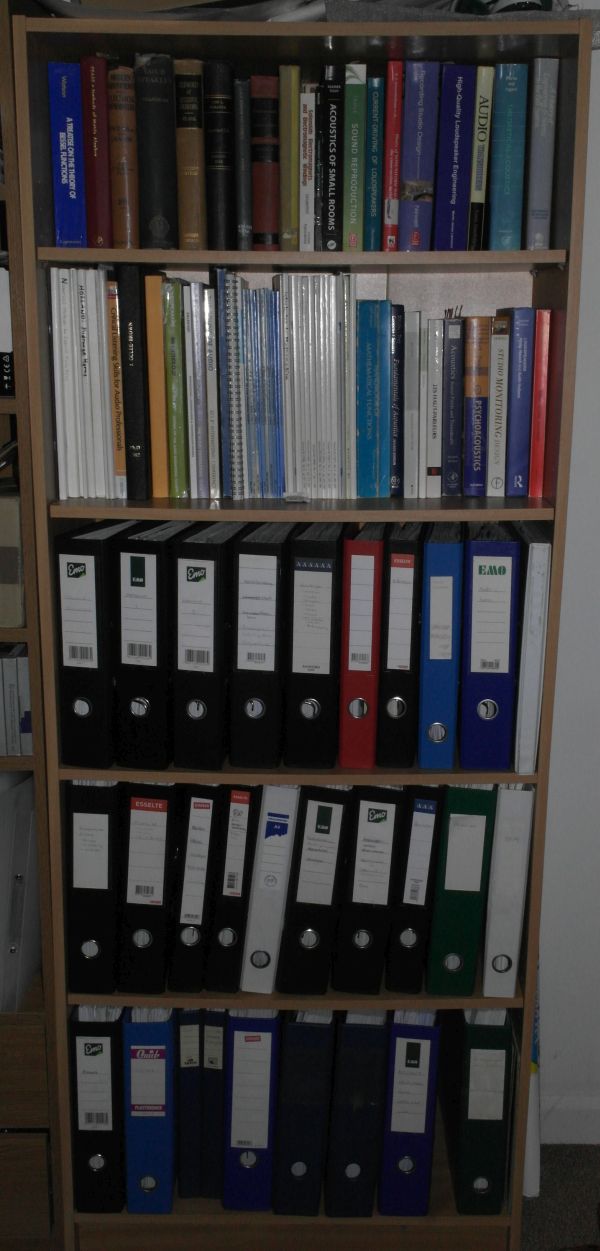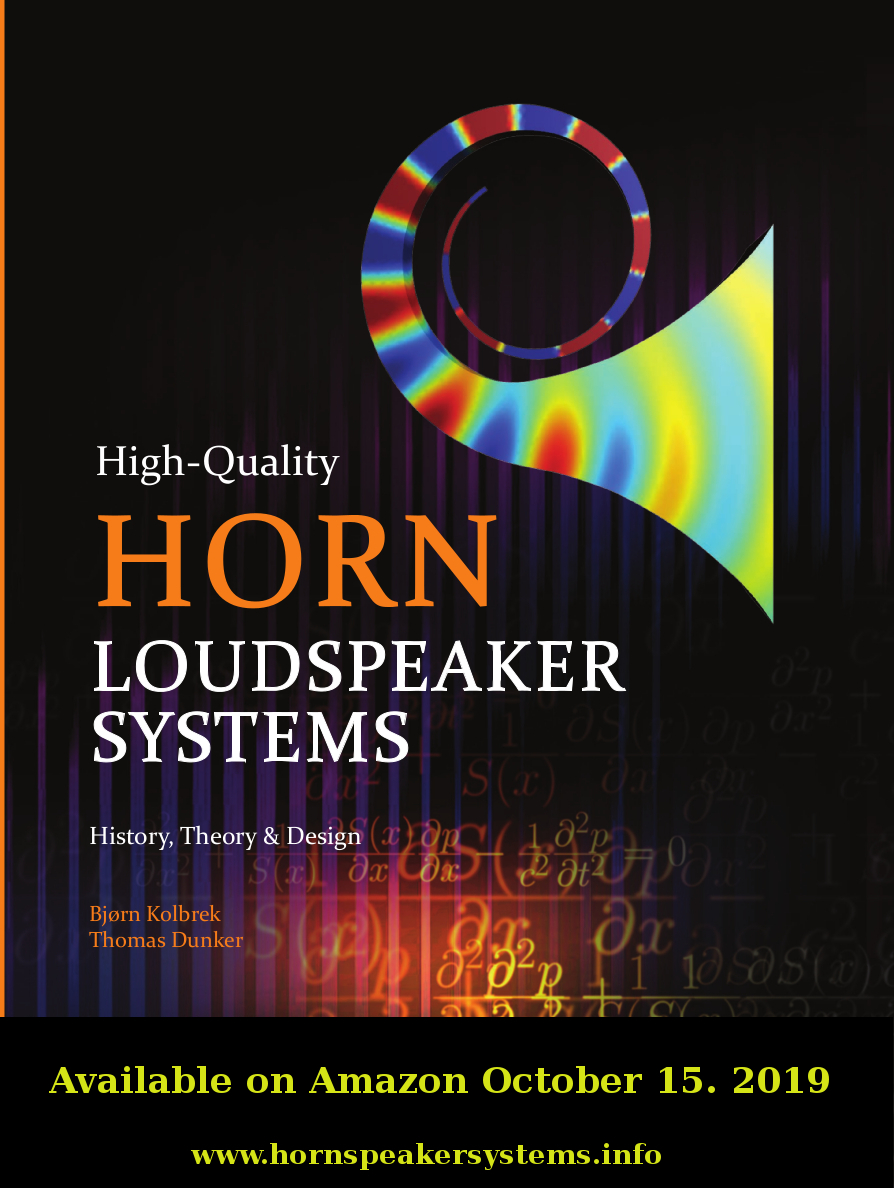As is well known to anyone who have started learning about horns, the knowledge is spread over a large number of articles, scientific papers and book chapters. One usually have to start with some of the well-known summary articles, like the three-part article series from Wireless World by Jack Dinsdale, or the two-part series from audioXpress by Bjørn Kolbrek, and follow the "paper trail" from there.
We too started that way, following the references, and accumulating a large number of articles. It soon became clear, though, that some of the articles were only re-iterating (simplifications of) horn theory that could be found in the books by Olson and Beranek, while adding just a small bit of useful information. Even the graphs typically displayed were often taken from Olson's book. Several of the more useful and informative articles were difficult to obtain.

Part of our horn loudspeaker library. This is just (a fair bit of) what we have on paper, loads more exist in electronic format.
As is quite typical in scientific literature, the notation will also differ between articles. For instance, the free parameter T used in hyperbolic-exponential (Hypex) horns is denoted M by Beranek and Leach. Some authors solve the horn equation using pressure as the free variable, others use the velocity potential. And some of the early derivations of the equations for finte horns used Webster's original definition of acoustic impedance (ratio of pressure to volume displacement) rather than the modern definition (ratio of pressure to volume velocity). Olson's equations for finite exponential horns do not work below cutoff for horns with negative flare, while the equations they are based on (by Stewart and Lindsay) do. And so on.
All of this can be confusing for a beginner, and it was sometimes quite hard to figure out what the correct solution was. So I (Bjørn) had to work through the math. This was quite useful, as I was at this time also writing horn simulation software, and an intimate knowledge of the equations was helpful in implementing them efficiently.
Being able to simulate horns with fine control over the model used also raised a number of questions about actual wave fronts in horns and correction of the horn shape to take that into account, what radiation impedance model to use, what happens when a horn is placed near wall(s) or in free air etc. These questions led us to perform numerical experiments that deepened our understanding.
But it wasn't just the horn theory that was scattered. The theory of sound radiation and directivity also had to be assembled from many papers, books and even patents. Even though horns are now mainly used for directivity control, the theory of how they perform that function, or how to evaluate the directivity performance (including how close a horn comes to having constant directivity), is usually not found in the classical texts on horns.
Most of the available horn theory is concerned with the loading properties of horns, as it is based on the one-dimensional horn equation of Webster. But one-dimensional theory cannot predict a three-dimensional quantity like directivity. Theory exists to handle the this problem, though, but it is not widely known, and actually too complicated to apply in most cases. It is included in the book, but in practice numerical simulations are more useful.
The combination of horn and driver, especially for bass horn use, has been reasonably well covered, with Keele and Leach providing equations to design the system from specifications. Working through these equations, however, some inconsistencies were found. It was also found that the classical method of reactance annulling using Hypex horns was flawed, and was reworked. More flexible methods of system design were also developed.
Trying to consolidate all available horn theory was not an easy task, but it was very interesting, and gave some new insights that are described in the book.

